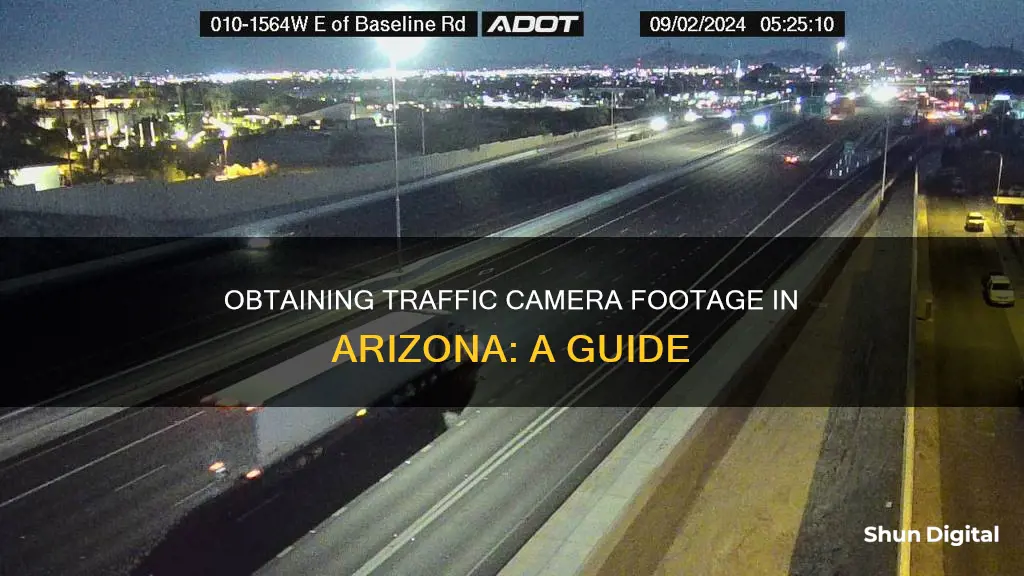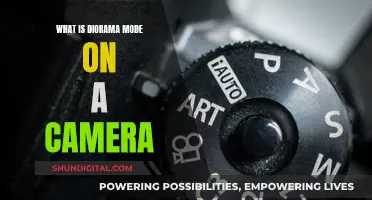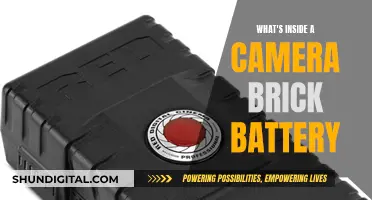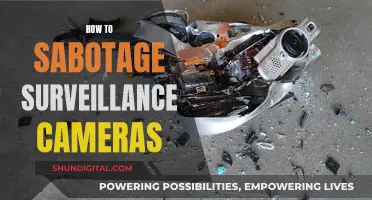
Traffic camera footage can be crucial evidence in the aftermath of a car accident, helping to determine the cause and holding responsible parties accountable. In Arizona, there are several ways to obtain such footage, depending on the location and nature of the accident. The Arizona Department of Transportation (ADOT) operates over 300 traffic cameras, primarily used for monitoring traffic flow and providing real-time information to drivers. To obtain footage of an accident, a public records request can be submitted to ADOT, including specific details such as location, date, and time. There may be fees involved, and it could take several weeks to process the request. Alternatively, if the accident occurred on a highway or interstate, footage may be accessible via the ADOT website or the AZ 511 app. In some cases, footage may be obtainable from other sources such as red-light cameras, dashcams, helmet cams, or nearby businesses with surveillance cameras. However, it is important to act quickly as many organizations have record retention policies, and footage may be deleted within a few days to a few weeks. Obtaining footage can be challenging, and individuals may need to consult a lawyer to navigate the process and ensure the preservation of evidence.
| Characteristics | Values |
|---|---|
| Purpose of traffic cameras | To enforce traffic laws, monitor traffic flow, and provide real-time information to drivers |
| Camera operators | Cities, Arizona Department of Transportation (ADOT), local agencies, and law enforcement |
| Types of cameras | Traffic cameras, red-light cameras, dashcams, helmet cams, surveillance cameras, cell phone cameras |
| Obtaining footage | Submit a public records request to ADOT or contact the appropriate agency or owner of the footage |
| Request details | Include specific details such as location, date, and time of the accident |
| Fees | May be charged depending on the time and effort required to fulfill the request |
| Retention period | Varies, typically from a few days to several weeks or months, up to a few years |
| Legal considerations | Privacy laws, subpoenas, court orders |
What You'll Learn

Identify the location of the traffic camera
Arizona has a network of more than 400 cameras statewide, with the majority being along the major freeways in Phoenix and Tucson. The Arizona Department of Transportation (ADOT) uses these cameras to help manage traffic. When the ADOT Traffic Operations Center is notified of a freeway incident, dispatchers use the camera system to search for the incident. Once it's spotted, appropriate personnel are dispatched.
ADOT has a website, AZ511, where the public can access these traffic cameras. Here are the steps to find the location of a traffic camera on AZ511:
- Navigate to www.az511.gov.
- On the top left-hand side of the page, hover your mouse over "Traffic".
- A drop-down menu will appear. Hover your mouse over the option "Cameras List" and click.
- A new page will load with two options to filter the cameras. Select the "Area" and "Roadway" for the camera you need to view from each drop-down menu.
- The page will refresh and display the roadway options with a preview of the last photo update captured by the traffic camera.
- Click on each image to expand the view and see more details, including the location of the camera.
In addition to AZ511, recent still photos from traffic camera footage are accessible through the city of Phoenix's official traffic website and partnering agencies.
If you are looking for footage from a specific incident, you will need to identify and contact the relevant authority or agency that manages the traffic cameras in that area. In many cases, this could be the local police department, department of transportation, or a municipal traffic management center. You will need to provide specific details about the incident, such as the date, time, and location, and follow the authority's formal process for requesting footage.
Focusing on Camera Image: The Key Component Explained
You may want to see also

Determine the jurisdiction of the camera
To determine the jurisdiction of the camera, you must first identify the relevant authority responsible for managing the traffic cameras in the area where the incident occurred. In Arizona, this could be the local police department, the Arizona Department of Transportation (ADOT), or a municipal traffic management center.
The ADOT, for instance, has a network of over 400 cameras statewide, with the majority located along major freeways in Phoenix and Tucson. They also have cameras installed at Road Weather Information System (RWIS) sites, which are used to gather real-time information about adverse weather events and provide updates on weather and road conditions.
Once you have identified the relevant authority, you can reach out to them through their official channels, such as a phone call, email, or an in-person visit to their office. Check their website for contact information or specific instructions on obtaining traffic camera footage.
It is important to provide specific details about the incident when requesting traffic camera footage, including the date, time, and location. This will help the authorities locate the relevant footage more easily.
Swann Cameras: Made in China?
You may want to see also

Contact the appropriate agency
Contacting the appropriate agency is a crucial step in obtaining traffic camera footage in Arizona. Here are some detailed steps to guide you through the process:
Identify the Jurisdiction:
First, identify whether the camera is operated by the local police department, the Arizona Department of Transportation (ADOT), or a private company. This information is essential as it determines whom you need to contact to access the footage.
Contact the Relevant Agency:
Once you've identified the jurisdiction, reach out to the appropriate agency. For instance, if the camera is managed by ADOT, you can submit a public records request through their website. Provide specific details about the accident, including the date, time, and location. Additionally, be prepared to offer your contact information and a clear description of the footage you seek.
Understand the Potential Fees and Timing:
It's important to note that obtaining footage may come with associated fees, depending on the time and effort required to fulfill your request. The process can also take several weeks, so it's essential to be patient and persistent.
Be Prepared for Privacy Considerations:
If the footage contains identifiable information, such as license plates or faces, be aware that it may be subject to privacy laws. In such cases, additional permissions or a court order may be required to access the footage.
Follow Up on Your Request:
After making the initial request, be sure to follow up politely and persistently. This ensures your request is being processed and can help expedite the procedure.
Seek Legal Advice if Needed:
If you encounter challenges or are unsure about your rights and obligations regarding the footage, consider consulting an experienced car accident attorney. They can provide valuable guidance and help you navigate any legal complexities.
Obtaining traffic camera footage in Arizona can be a complex process, but by following these steps and staying diligent, you can increase your chances of accessing the evidence you need.
The Evolution of Smartphone Cameras: How Are They Made?
You may want to see also

Request the video footage
Requesting traffic camera footage in Arizona can be a complex process, but it is an important step in determining fault and liability in a car accident case. Here is a detailed guide on how to request the video footage:
Step 1: Identify the Type and Location of the Camera
The first step is to identify the type and location of the camera that may have captured the accident. This could be a traffic camera, a red-light camera, a dashcam, a helmet cam, or a surveillance camera from a nearby business. Review the police report or contact the local police department or the Arizona Department of Transportation (ADOT) for this information.
Step 2: Determine the Jurisdiction of the Camera
Once you know the type and location of the camera, you need to determine who operates it. Is it under the jurisdiction of the local police department, ADOT, or a private company? This information is crucial as it determines who you need to contact to obtain the footage.
Step 3: Contact the Appropriate Agency
After identifying the camera's jurisdiction, contact the respective agency to request the footage. Be prepared to provide specific details about the accident, such as the date, time, and location. Keep in mind that some agencies may charge a fee for providing the footage, so inquire about any associated costs beforehand.
Step 4: Submit a Formal Request or Subpoena
To obtain the video footage, you may need to submit a formal request or, in some cases, file a subpoena if the footage is required as evidence in a legal case. This is especially true for footage held by private businesses, which often have shorter retention periods for their surveillance footage. Your attorney can assist in issuing a subpoena to ensure the footage is preserved and obtained.
Step 5: Follow Up on Your Request
After making the initial request, be sure to follow up with the agency to ensure your request is being processed. Be persistent yet polite in your communication. Some agencies may require you to provide a release form stating that the footage will only be used for personal purposes.
Step 6: Review the Footage and Seek Legal Advice
Once you receive the video footage, review it carefully for any details that may help determine the cause of the accident. Take note of vehicle positions, speeds, and any other relevant information. Remember that the footage may contain sensitive data, so use it responsibly. If you are unsure about your next steps or how to use the footage effectively, consult an experienced car accident attorney for guidance.
Exploring the Toggle Feature in Camera Raw
You may want to see also

Review the footage
Once you have obtained the traffic camera footage, you should carefully review the video. Take note of any details that may help determine the cause of the accident, such as the position and speed of the vehicles involved. Remember that the footage may contain sensitive information, such as the identity of other drivers or passengers, so it should be treated with discretion and only shared with those who have a legitimate need to see it.
If you are unsure about what to do after obtaining the footage, it is recommended that you seek legal advice from an experienced car accident attorney. They can help you understand your rights and obligations and advise you on how to use the footage effectively to build a strong personal injury case. Accident reconstruction experts can also use the footage to reconstruct the crash, determining factors such as the speed of the vehicles and the sequence of events.
In some cases, the footage may help identify and locate bystanders who witnessed the collision. These individuals can provide valuable testimony to support your claim. It is important to act quickly, as most traffic camera systems will only store footage for a few days to several weeks, or even months in some cases, before it is deleted or overwritten. Once it's gone, it's usually unrecoverable.
Charging the Polaroid Snap Touch: A Step-by-Step Guide
You may want to see also
Frequently asked questions
You can submit a public records request to the Arizona Department of Transportation (ADOT). This request must include specific details about the accident, such as the location, date, and time.
There may be fees associated with obtaining the footage, depending on the amount of time and effort required to fulfill the request.
It may take several weeks to process your request.
Yes, you can try contacting local law enforcement or the relevant transportation agency. Alternatively, you can reach out to nearby businesses that may have surveillance cameras installed.







